
10 Sentences of Simple Present, Simple Past & Simple Future
Chapter 5-8-13: Future in the Past. WHEN TO USE IT: The future in the past is used to discuss something in the past that you thought would happen in the future. It not important if you were correct or not or whether the action ultimately ended up happening. Use future in the past to discuss a plan or a promise that was made in the past.

stratiť príroda koláč dôkladný Porodiť strihať past present future
When we talk about the past, we sometimes want to refer to something which was in the future at the time we were speaking. We use past verb forms to do this: The last time I met her, she was leaving for a new job in Italy the following day. (past form of She is leaving)

Simple Future Tense Definition, Rules and Useful Examples • 7ESL
Future in the Past Form. Future time in the past is formed with either would or was/were going to in place of will or am / are going to (as used in regular future forms). Future time in the past cannot be formed with the present tenses for future meaning. This usually happens after an introducing clause in the past (for example with reported.
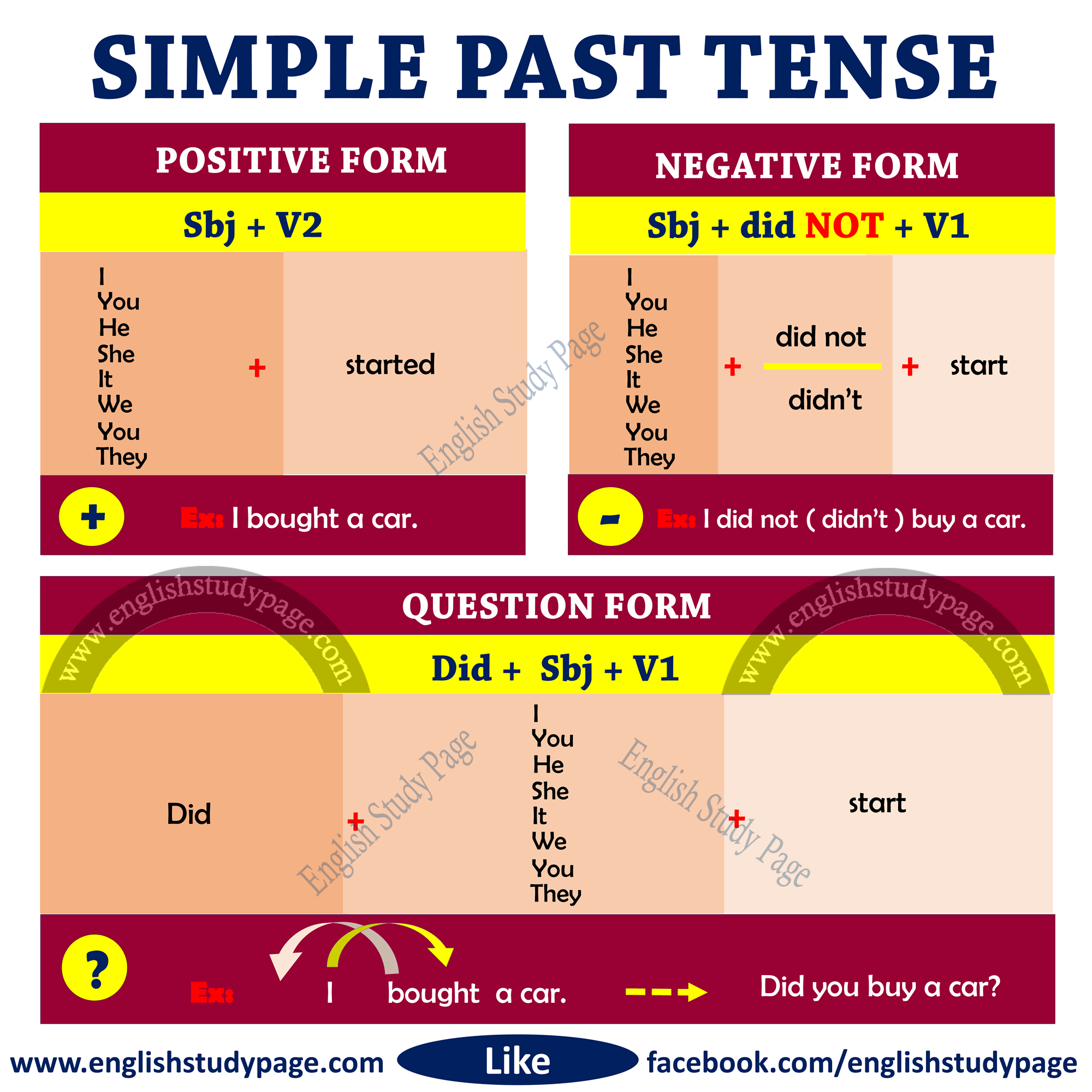
Structure of Simple Past Tense English Study Page
f t p Like simple future, future in the past has two different forms in English: would and was going to. Although the two forms can sometimes be used interchangeably, they often express two different meanings. FORM Would [would + VERB] Examples: I knew you would help him. I knew you would not help him. FORM Was/Were Going To
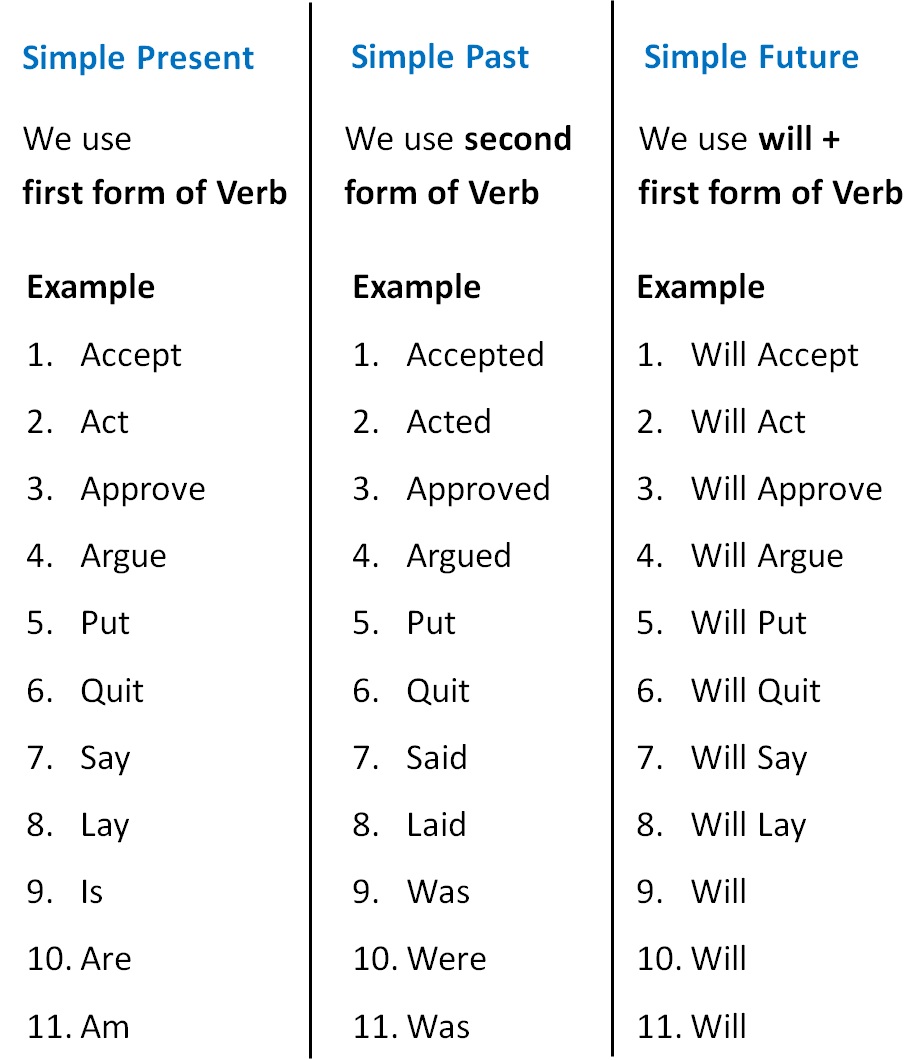
Simple Future Tense Verbs and tenses
What does Future in the Past mean? We use the Future in the Past to shape the future of the past. To show the future from the perspective of the past. Don't worry if you don't understand what I'm talking about. In fact, understanding the Future in the Past is not at all difficult. Take a look at an example:

Present Tense Past Tense Future Tense IsaackruwArroyo
In English grammar, the future-in-the-past is the use of " would or was/were going to" to refer to the future from the perspective of some point in the past . As illustrated below, other verbs in the past progressive can also be used to convey this future-in-the-past perspective. Also known as: Prediction in the past Examples and Observations:

Simple Future Tense Verbs and tenses
The Simple Past is a form of the verb that shows the action or state happened in the past. For example: Lisa danced yesterday. Click here for the full info, rules, examples and exercises on the simple past and how to use it.. Simple Future The Simple Future is a form of the verb that shows the action or state will happen in the future. For.

Kalimat Nominal Simple Past Future dan Past Future Continous Dunia
A tense is the way we speak about time. In English, you can use the present tense (right now), the past tense (yesterday, last week and so on) and the future tense (tomorrow, next month and so on). To speak about the future in English, we mostly use the word "will.". This word helps change the main action verb to the future tense.
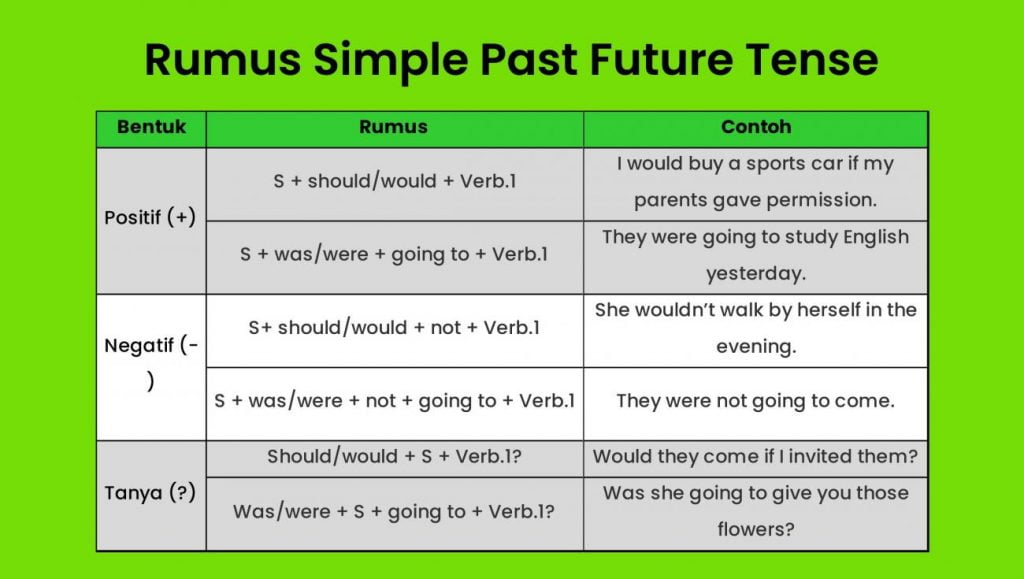
√ 9+ Contoh Past Future Tense Pengertian & Rumus [LENGKAP]
1. This form is used to describe a future plan or intention relative to the time of speaking. 2. This form is often used when the anticipated event did not actually happen. 3. It is formed with 'was/were + going to + infinitive of the planned verb. ' Going to ' is used to talk about the future from the present moment: - The traffic is awful!
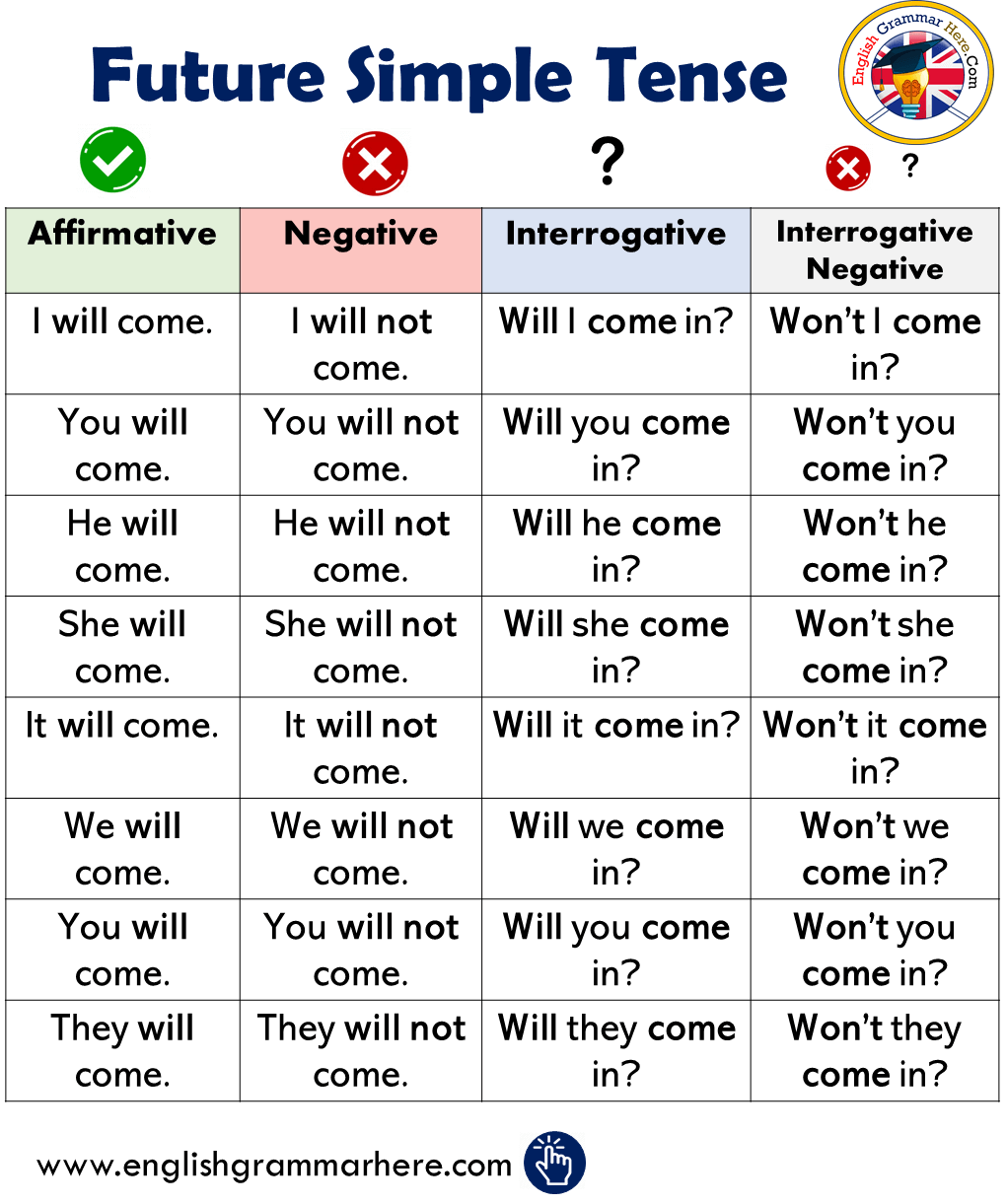
Future Simple Tense in English English Grammar Here
The simple future is a verb tense that's used to talk about things that haven't happened yet. This year, Jen will read War and Peace. It will be hard, but she's determined to do it. Use the simple future to talk about an action or condition that will begin and end in the future. Here's a tip: Want to make sure your writing shines?
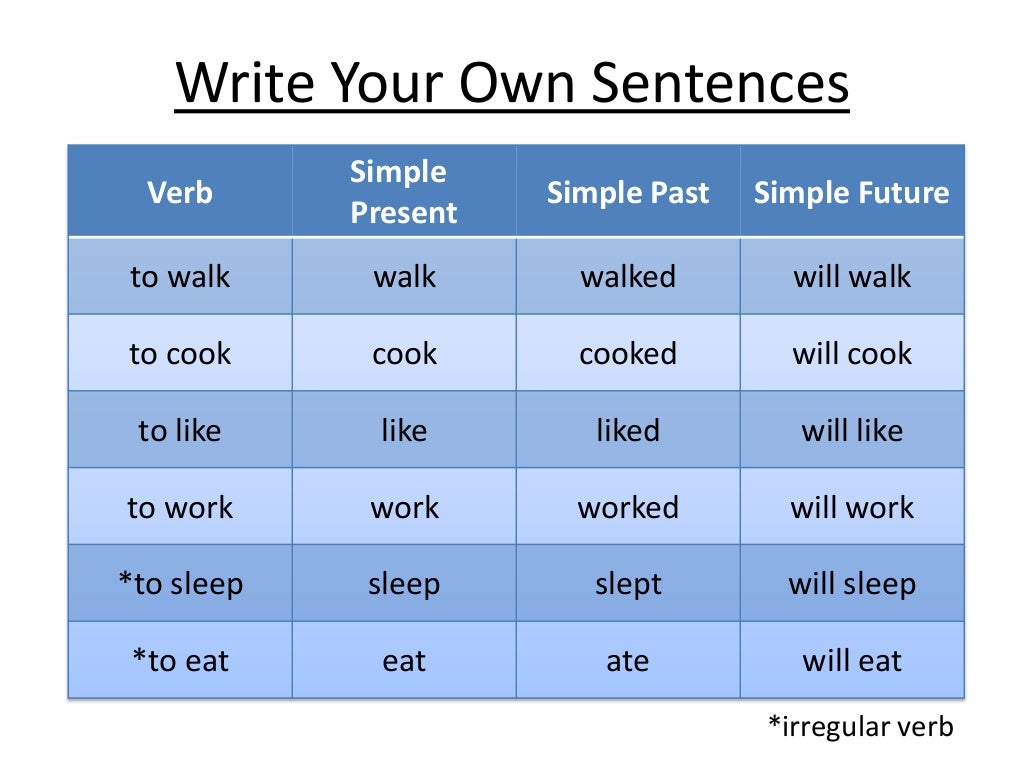
Simple present, past, and future tenses
Past, present, and future tenses. The past, present, and future are the central divisions of time in English. The present represents actions happening now, while the past represents actions that happened earlier, and the future describes actions that will happen later. Simple tense. The simple tense is a grammatical aspect that refers to the.

Present past future SIMPLE worksheet
Exercise 1 Choose the most appropriate form to refer to the future in the past to complete the sentences below. 1 I saw he had a gun, but I didn't think he . 2 I knew you the exam. You didn't make any effort! 3 I lost my passport the day before we for our honeymoon. 4 Sorry, I you today, but I forgot.
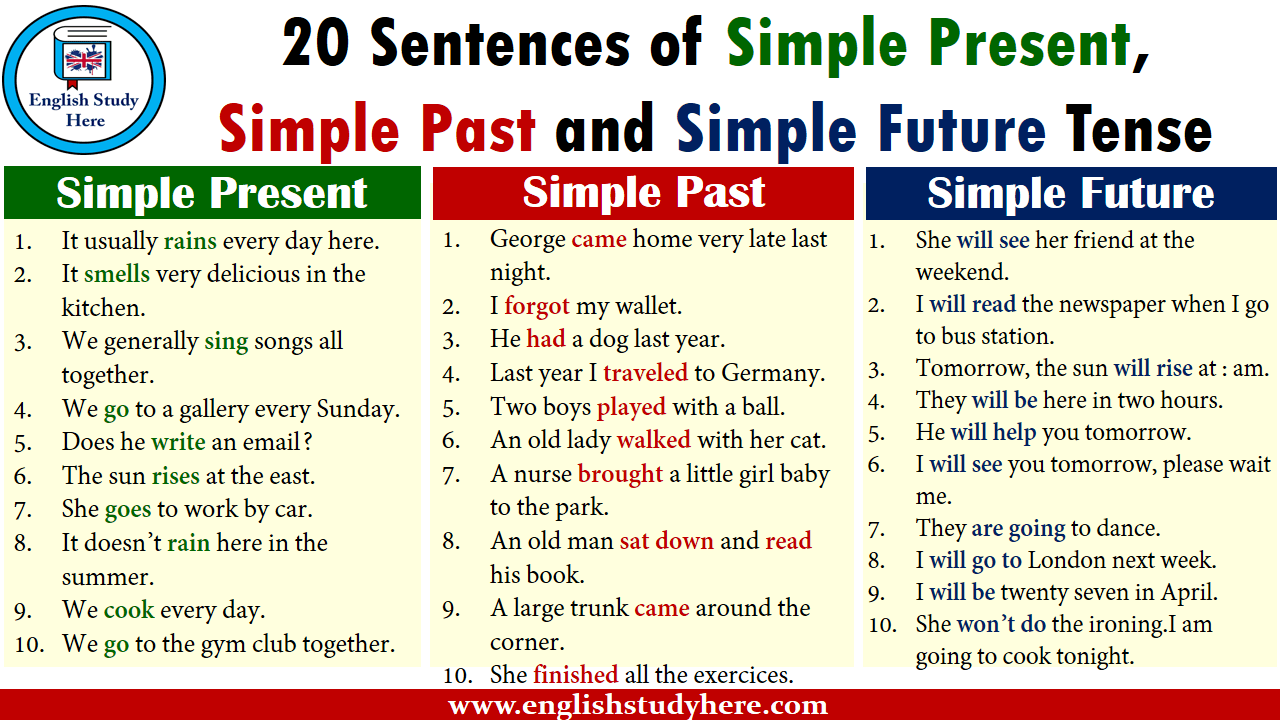
Write ten sentences on Each tense Simple(present, past, and future
English Grammar Verbs Talking about the future Talking about the future Level: intermediate When we know about the future, we normally use the present tense. 1. We use the present simple for something scheduled: We have a lesson next Monday. The train arrives at 6.30 in the morning. The holidays start next week. It's my birthday tomorrow. 2.
/Getty_future_in_the_past-168619593-56af9fbb5f9b58b7d01b2f58.jpg)
FutureinthePast Use in English Grammar
The Future Simple tense is often called the " will tense " because we make the Future Simple with the modal auxiliary will . How do we make the Future Simple tense? The structure of the Future Simple tense is: For negative sentences in the Future Simple tense, we insert not between the auxiliary verb and main verb.

Future Simple простий майбутній час Catch Grammar
The future in the past follows similar rules as the simple future forms will going to and the continuous verb. Would is used to talk about a past future promise or prediction with no evidence. Was/were going to is used to talk about a past future firm plan, intention or a prediction with evidence.
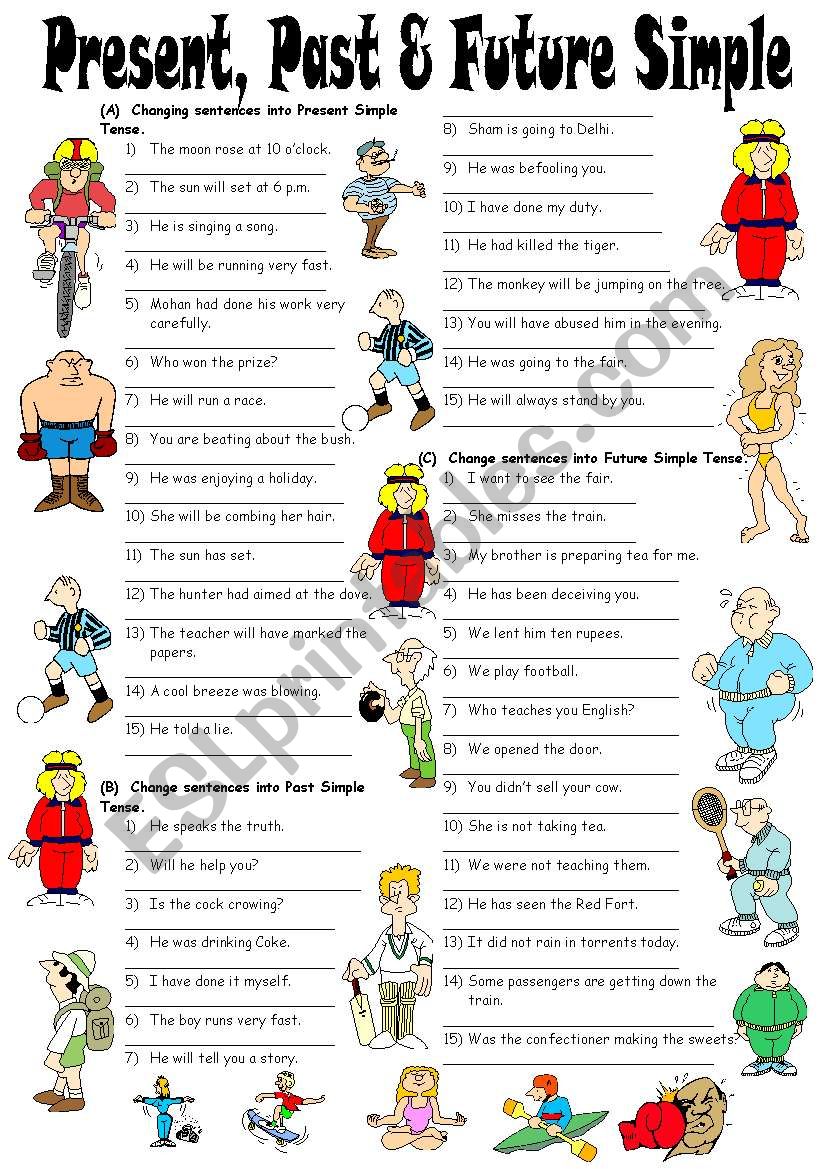
English Exercises Present Simple Past Simple Future Simple Gambaran
2 Answers Sorted by: 4 He didn't know that we will soon buy a new house. [buzzer] He didn't know that we would soon buy a new house. [good] He didn't know we were going to buy a new house. [all past: good] He didn't know we intended to buy a new house. [all past: good] That's said, I would say: